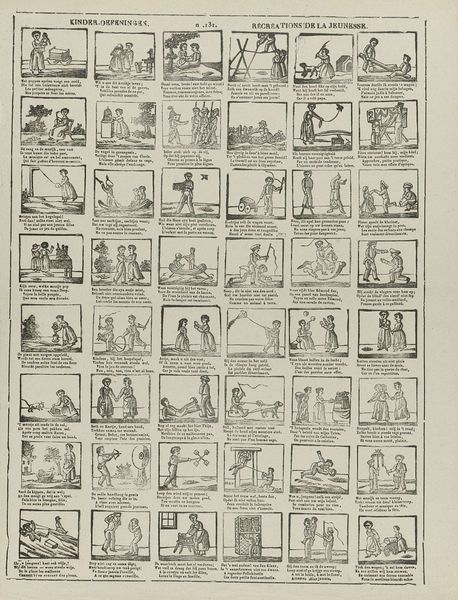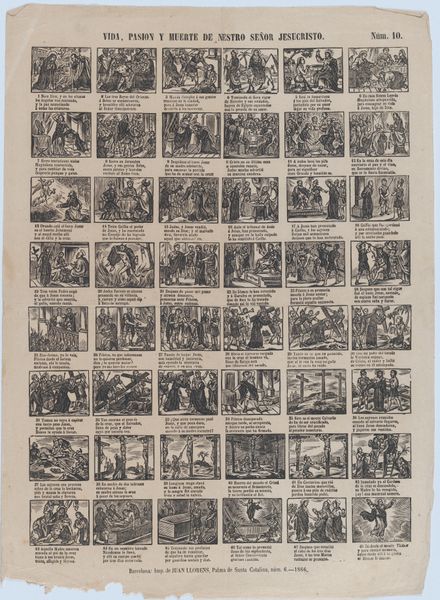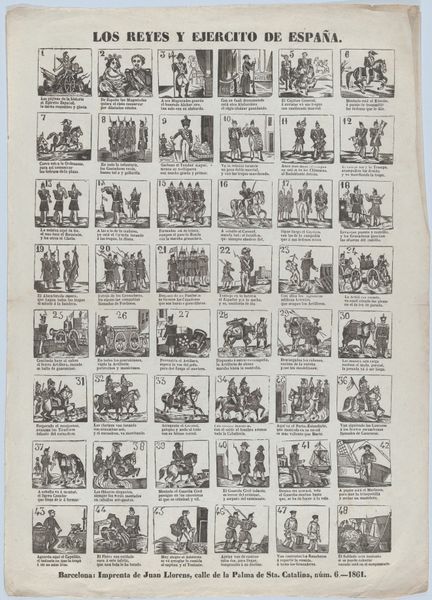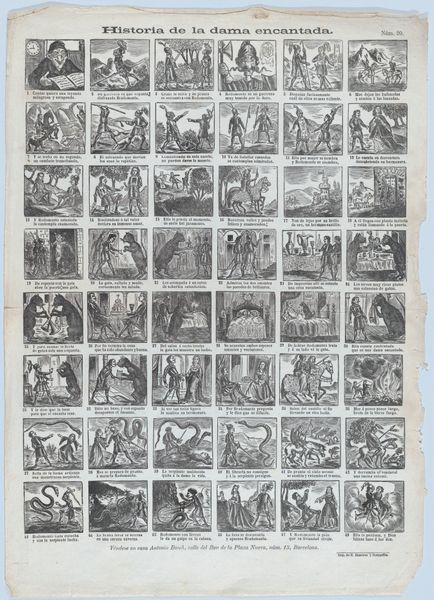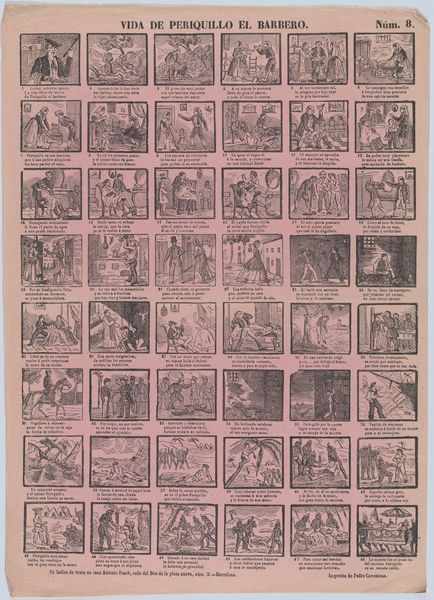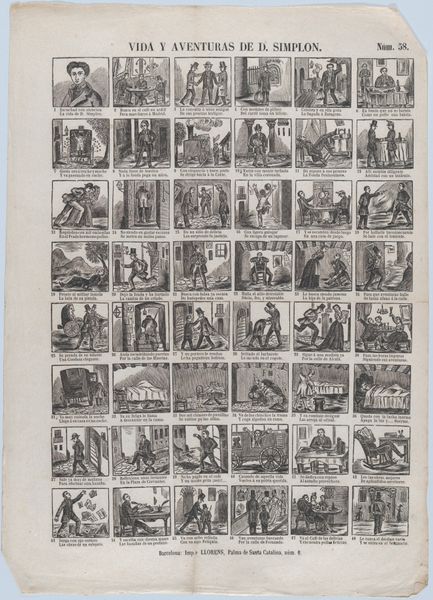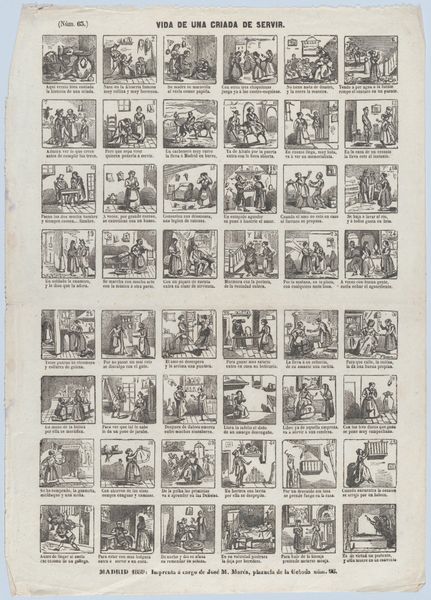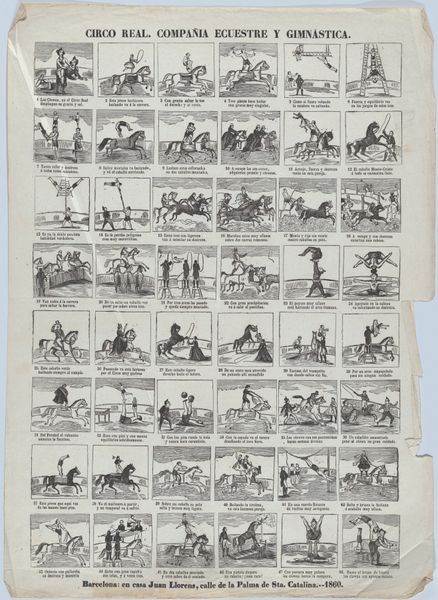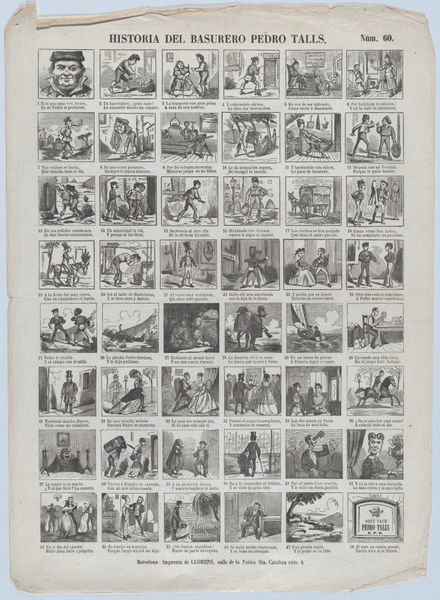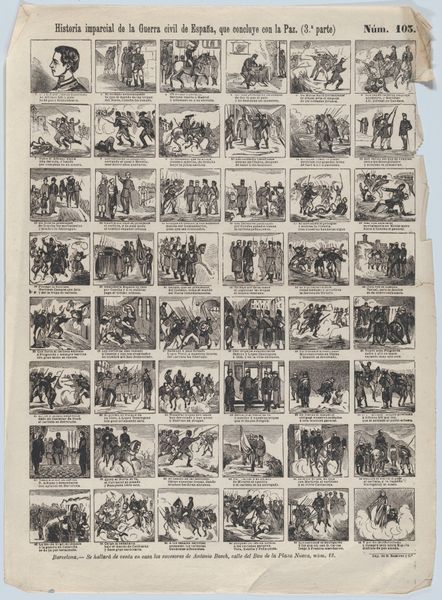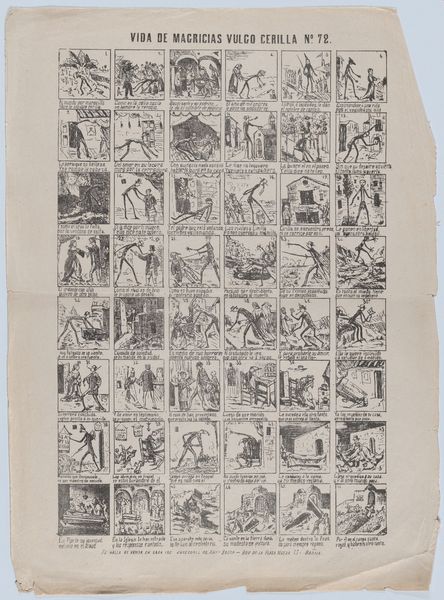
Broadside with 48 scenes depicting the misfortunes of a skinny man 1864
0:00
0:00
drawing, graphic-art, print, engraving
#
drawing
#
graphic-art
#
narrative-art
# print
#
caricature
#
genre-painting
#
academic-art
#
engraving
Dimensions: Sheet: 17 5/16 × 12 3/8 in. (44 × 31.5 cm)
Copyright: Public Domain
Curator: What a striking piece! This is a broadside from 1864, created by José María Marés. It's titled "Broadside with 48 scenes depicting the misfortunes of a skinny man," and is currently held at the Metropolitan Museum of Art. Made with engraving, it delivers a potent visual narrative. Editor: My immediate impression? It's a whirlwind of comedic torment! Each tiny scene is a mini-drama of awkwardness. The poor fellow seems perpetually at odds with the world; physically, socially, comically. It looks like a real early comic strip! Curator: Indeed, and that's precisely the cultural draw here. These broadsides were immensely popular as accessible visual culture, effectively a mass-produced form of entertainment that carried accessible morals. It speaks to 19th-century societal anxieties played out for public consumption. The caricature aspect also allowed viewers to playfully distance themselves from, or perhaps project onto, the anxieties of the skinny man. Editor: Absolutely, there's so much going on symbollically, The repeating imagery creates a specific resonance of thinness representing weakness, vulnerability… the state of being perpetually acted upon, or easily blown around by winds, and also perhaps offering a kind of subversive counterpoint that honors the ‘underdog’. Curator: It's tempting to interpret these scenes solely through a lens of personal misfortune. However, considering the historical context, such images often carried coded social commentaries. The "skinny man" could symbolize a critique of political structures, economic disparities, or societal absurdities through allegory or narrative metaphor Editor: True, those repeating misfortunes do create this kind of accumulating feeling of anxiety and social critique. The broadside does make it all so direct! Yet what the artist captures about vulnerability...I can feel how timeless that kind of message remains today. Curator: I agree. Its enduring appeal is in part due to how effectively it illustrates anxieties concerning individuality versus social norms, all made palatable through caricature and presented as this kind of reproducible commercial artifact. It shows art’s intrinsic ties to politics and social experiences, but its emotional component speaks to universal truths.
Comments
No comments
Be the first to comment and join the conversation on the ultimate creative platform.
